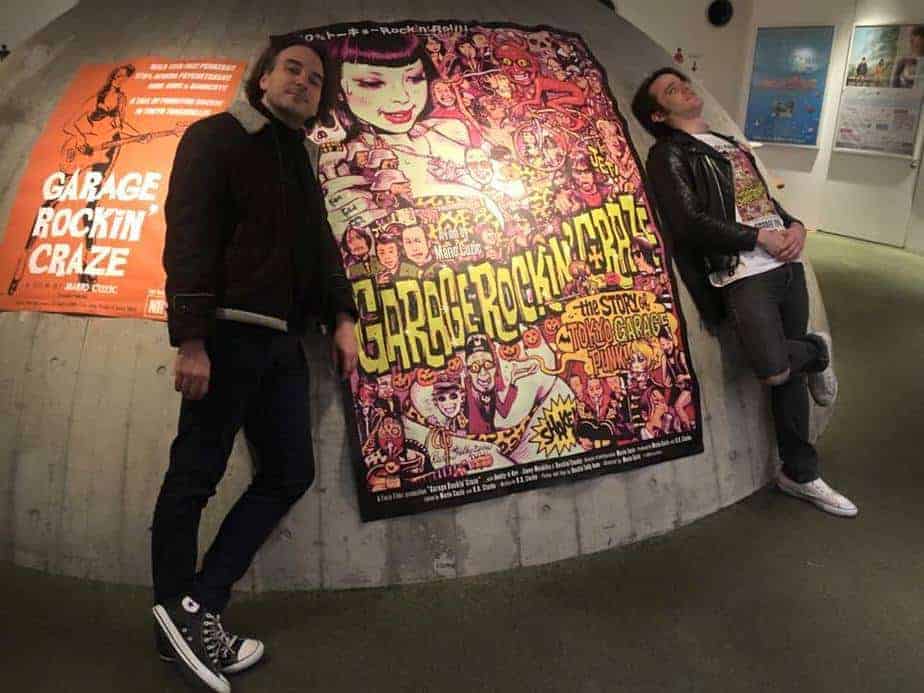Susan Morgan Cooper is an award-winning documentary filmmaker and producer. After she had spent her childhood and youth in Wales she went to the USA where she became interested in film editing. In the 90s she spent time in Croatia which resulted in the making of her first documentary “Mirjana – One Girl's Journey” which was inspired by a 16-year-old girl she met there, her life story and the how she and her family had been affected by the Balkan War. Over the years Cooper has helmed many documentaries, such as the highly acclaimed “An Unlikely Weapon” about Eddie Adams, the Pulitzer Prize-winning photographer, as well as “Hopper: In His Own Words” which tells the story of actor Dennis Hopper.
Cooper also directed “Mulberry Child“, a documentary based on a memoir written by Jian Ping which deals with the relationship with her daughter, her times in China during the Cultural Revolution and how she and her family eventually came to the USA.
In our interview with the director, we talked about the story behind “Mulberry Child”, the filming process and how its story might be applied to other immigrants from China of that period.
What inspired you about the novel so that you decided this would be your next project?
What is happening in America now has some of the underpinnings of the Chinese Cultural Revolution: The old order is considered toxic and is being destroyed sometimes beyond reason, the youth are out in thousands in the streets demonstrating, our history is going to be re- written, our statues are being toppled. In “Mulberry Child”, Jian Ping describes in a unique personal way, her growing up under the oppression of Mao where she was taught to be voiceless and invisible. This fascinated me! How could a whole nation be molded to think as one? When Jian emigrated to the United States she discovered a freedom of choice and a freedom of speech. Jian's daughter Lisa grew up in America with that freedom; being taught that anything was possible and that she could say exactly what she thought. Growing up so differently, how could the mother and daughter truly understand one another? I thought if I could trace the emotional disconnect between Jian and Lisa back to Jian's childhood during the Cultural Revolution, it would make an interesting film.
Can you explain the symbolism of the mulberry child?
Jian Ping's parents were both busy working for the government and because of her father's high ranking position, the family was given a house in a government compound. Sadly, there were no children for Jian to play with, so she would often climb an old mulberry tree. She and her grandmother were later exiled to the countryside miles from anywhere to live in a mud hut. There was no electricity, no running water, the roof leaked and the floor was made of coarse mud. Little Jian worked hard caring for Nainai, carrying their drinking water in a heavy pot for miles. When she felt isolated and sad, missing her family, her grandmother would remind her of the mulberry tree she had climbed. How enduring the harshest storms, the tree would never bend or break. Nainai told Jian that she had to be strong like the mulberry tree.
Would you say Jian Ping's story is symbolic for the gap between young and old within Chinese immigrants?
I think that Jian's story is symbolic of the gap between young and old Chinese immigrants, or between immigrants universally. The immigrant has sacrificed so much to give their children a better life. The children, growing up with everything they need, a good education, an abundance of food and most importantly freedom, cannot possibly understand how much harder life was for their parents and grandparents. Immigrants came up to us and said after watching the film, they were going to call their parents, their grandparents to really listen to their stories to learn and to better understand them.
The documentary follows a very interesting structure and narrative approach. How did you decide on that approach?
All of my films thus far have a narrative structure. I don't make documentaries about ‘the inner workings of a Steinway piano'. Many good documentary film makers make those highly detailed, educational films. Instead, I like to make films about people and their personal journeys. To me it's important that an audience connects emotionally with their subject on that journey. Once there's a connection, I find the audience more deeply understands the history, the knowledge, the details of the tapestry.

How long did shooting and editing take?
The film took almost two years to make. At first, we shot in China for ten days in order to get authentic footage of Jian's family and of China. Jian had hired a wonderful guide, Mr. Gao, for our trip to the mud village outside of Baicheng. We traveled in an old camper supplied with soft slippers and a large jar of candy. Mr Gao drove us for 10 hours in that camper at a speed of 90 miles per hour. When any vehicle crossed our path, Mr Gao, like a Hollywood action hero, would drive full speed ahead, horn blasting, never once using the brakes, swerving only at last minute…missing the car by inches while we all held our breath!
The mud village was like going back centuries in time. The roads were tiny, so were the huts… all made of mud. Inside there was no electricity, no running water. It was damp, musty and smelled awful. We had to hold our noses. Yet the children emerging from those huts were cleanly dressed in bright colored American sweatshirts, jeans and tennis shoes. I wanted to film one scene with red flags floating across the mud village. As evening approached, an unsuspecting mud hut owner came home from work on his moped to find a bunch of strangers up on his roof. Mr Gao and I were throwing red flags into the air as my cinematographer attempted to capture them.
I remember we took photos of an elderly couple and showed them the images inside the camera. I don't believe they had ever seen photos of themselves because their smiles, the way they blushed was precious.
I scraped some mud off one of the village walls, put it in a plastic bag and brought it back on the plane to the U.S. On my property in the Hollywood Hills, I worked with a handyman to mix earth, lime and straw. We covered some walls and a building under my pool with the mud. There we filmed the re-creations of Jian and Nainai's time in exile in the Chinese countryside. We even built a kang bed inside our mud hut.
Time would pass as I waited for each weekend in order to film the recreations. The children had school and the adults had work. Often I had to shoot around everyone's schedule. Outside my house on weekends, you would find at least twenty pairs of shoes. A wardrobe area was set up under my garage with everyone's costumes labeled.
We flew to Chicago to shoot a number of times to try and capture the relationship between Jian and Lisa. My cinematographer Quyen Tran who is Vietnamese was wonderful and very patient. She hung in there like a fly on the wall until we got the emotions we wanted on film. She had come to me highly recommended by the Pulitzer Prize winning and White House Press Photographer David Hume Kennedy.
The biggest challenge with Jian Ping in shooting was to get her to reveal herself. The trauma of her childhood had stifled her emotions and she found it hard to express her true feelings. But Jian was a trooper and she worked hard on herself. Also, much of Jian's interview was difficult to understand. I did not want to sub-title her as that would distance the audience. So, after filming, painstakingly, we worked together recording sound only, repeating her sentences over and over again, until we got the inflections and the pronunciation correct. It was a lengthy and tedious process. Jian showed so much tenacity and discipline, never once complaining. I remember thinking only her training under Mao could have made that possible!
Can you tell us something about future projects?
I'm now releasing “Fatal Distraction”. It's about the tragedy of children dying of heatstroke when loving parents leave them unknowingly in cars. One child dies this way every week. This film, hopefully like my last film, will receive a congressional screening. I think it will help pass the HOTCARS Act requiring sensory technology in cars to alert parents.
For my current documentary, I am doing research on the 1500 students who commit suicide every year on college campuses. I knew a boy named Devin who wanted to be a writer because he had a very close friendship with Ray Bradbury. He took his own life just before graduation. A narrative project I've been developing for some time called “East L.A. Kings” is with an agent at CAA right now. It's about a cop in East L.A. who takes a group of troubled kids off the streets and turns them into a championship hockey team. I have the support of both the L.A. Kings and the NHL.















